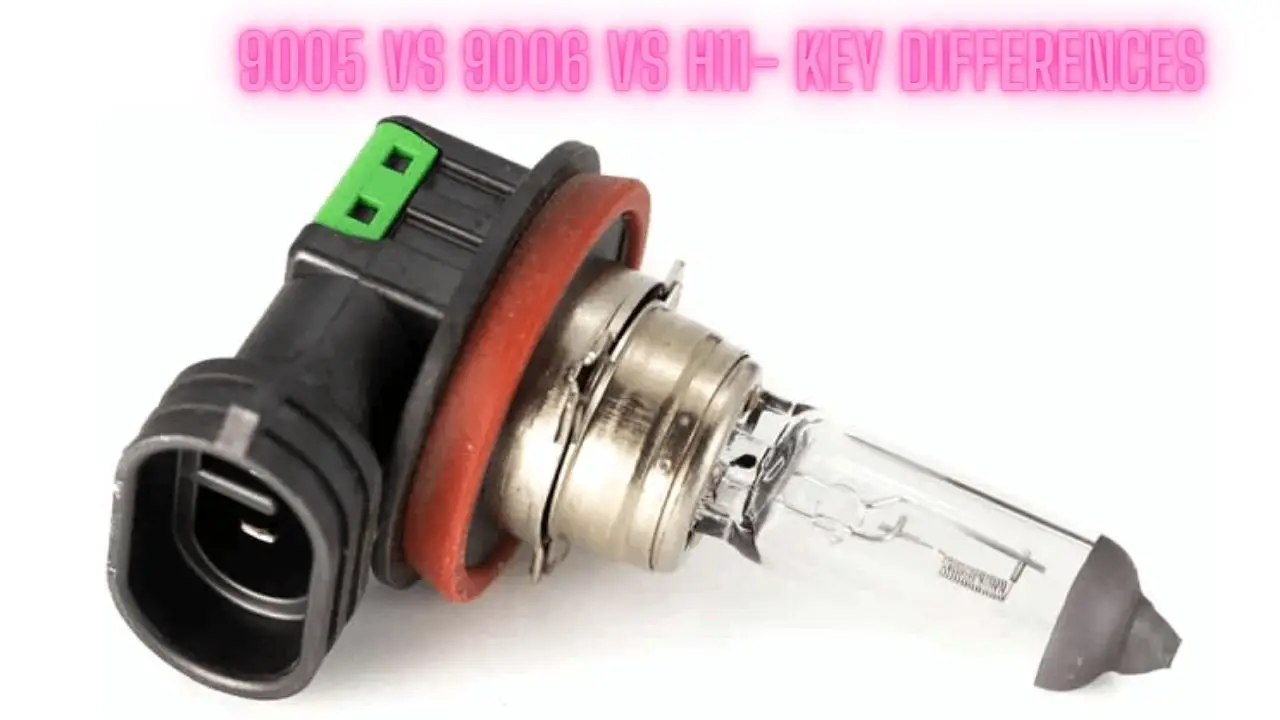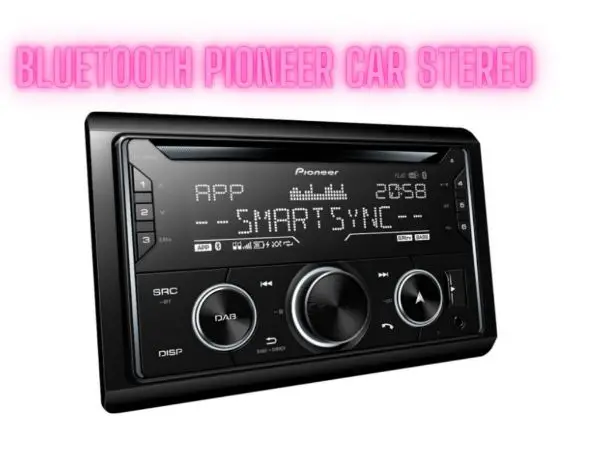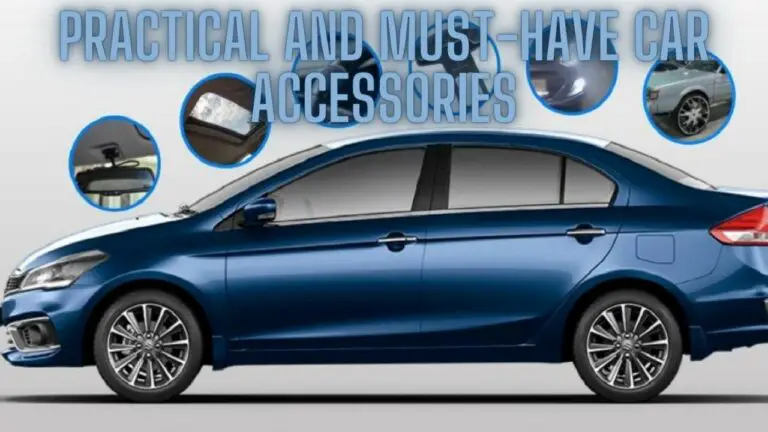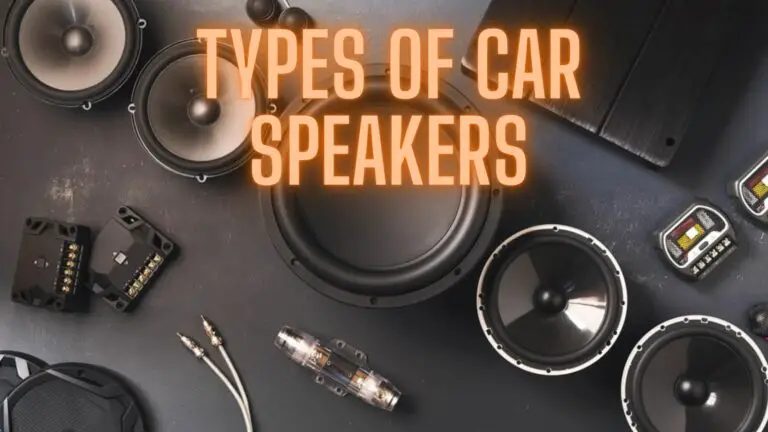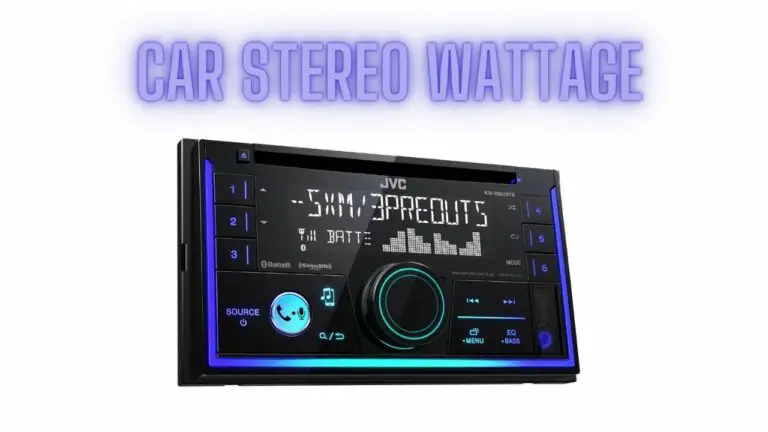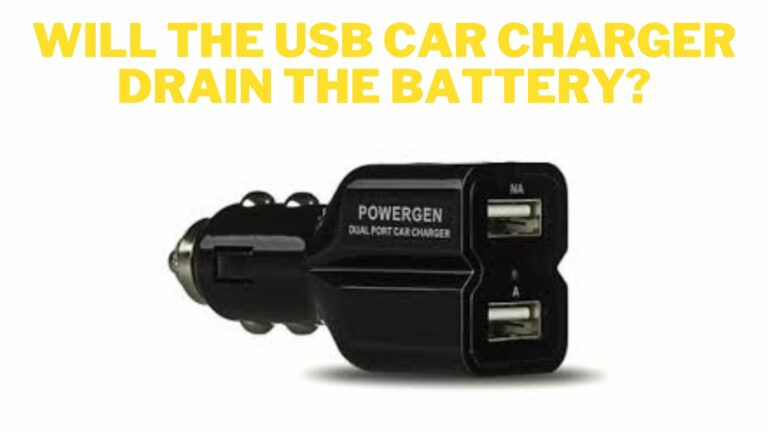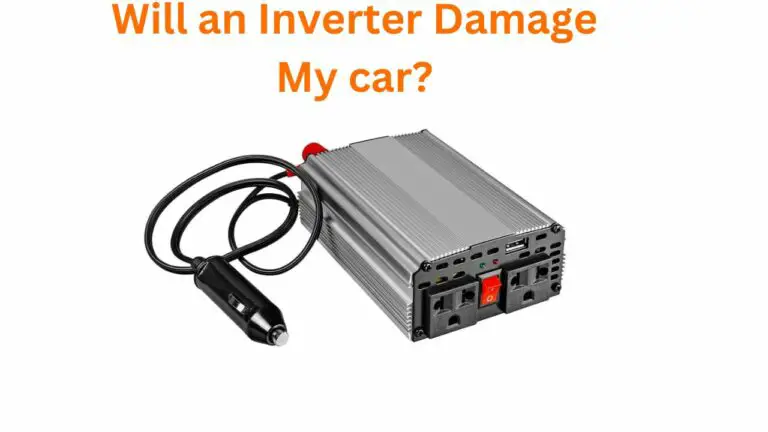9005 vs 9006 vs h11- Key Differences
Introduction
Automotive light bulbs are essential components of a vehicle’s lighting system, serving critical functions for visibility, safety, and style. They come in various types, each designed for specific purposes and applications. These bulbs illuminate the road ahead, signal turns and brakes, and enhance the overall aesthetics of the vehicle.
- Importance of Automotive Light Bulbs:
- Visibility: Proper illumination is crucial for driving safely, especially in low-light conditions or adverse weather.
- Safety: Bright and functional lights ensure that other drivers can see your vehicle and anticipate your movements, reducing the risk of accidents.
- Legal Compliance: Many countries have regulations mandating the use of specific types of bulbs with certain brightness levels and colors to ensure road safety.
- Aesthetics: Beyond functionality, automotive bulbs can also enhance the appearance of a vehicle, contributing to its overall design and style.
- Types of Automotive Light Bulbs:
- Headlights: Illuminate the road ahead, allowing the driver to see and be seen by other motorists. Common types include halogen, HID (High-Intensity Discharge), LED (Light-Emitting Diode), and projector headlights.
- Tail Lights: Illuminate the rear of the vehicle, indicating braking, turning, and reversing actions to other drivers.
- Turn Signal Lights: Blinking lights that indicate the intention to turn or change lanes.
- Fog Lights: Low-mounted lights designed to penetrate fog, rain, or snow, improving visibility close to the ground.
- Interior Lights: Illuminate the interior of the vehicle, including the cabin, dashboard, and instrument cluster.
- Key Considerations when Choosing Automotive Light Bulbs:
- Brightness: Lumens output determines how well the bulb illuminates the surroundings.
- Color Temperature: The color of light emitted, measured in Kelvin (K), can affect visibility and aesthetics.
- Energy Efficiency: Some bulb types consume less power while providing brighter light output, contributing to fuel efficiency.
- Longevity: Lifespan varies between bulb types, with LED bulbs typically lasting longer than traditional halogen or HID bulbs.
- Compatibility: Ensure that the chosen bulbs are compatible with the vehicle’s make, model, and lighting system.
- Maintenance and Replacement:
- Regular inspection of bulbs is necessary to ensure they are functioning correctly.
- Bulbs should be replaced promptly if they are dim, flickering, or burnt out to maintain optimal visibility and safety.
- Replacement procedures may vary depending on the bulb type and the vehicle’s design, requiring attention to manufacturer guidelines.
In summary, automotive light bulbs play a crucial role in ensuring visibility, safety, and style for vehicles. Understanding the different types, functions, and considerations can help drivers make informed choices when selecting and maintaining their vehicle’s lighting system.
9005 Bulb Explained
The 9005 bulb is a type of halogen automotive light bulb commonly used in vehicles for various lighting purposes, primarily as a high beam headlight. Here’s an explanation of the 9005 bulb, including its features, specifications, usage, characteristics, installation, and pros and cons:
- Description:
- The 9005 bulb is part of the HB series of halogen bulbs, known for its high beam functionality.
- It features a single filament design and is typically used in pairs for high beam headlights.
- The bulb has a standardized connector type and is designed to fit specific socket configurations in vehicle headlight assemblies.
- Purpose:
- Primary Function: The 9005 bulb serves as the high beam headlight, providing maximum illumination for improved visibility during night driving or in low-light conditions.
- Typical Applications: Used in various types of vehicles, including cars, trucks, SUVs, and motorcycles, that require high beam headlights.
- Characteristics:
- Wattage: Typically available in wattages ranging from 55 watts to 65 watts, providing a bright and intense light output suitable for high beam applications.
- Voltage: Operates at standard automotive voltage levels, typically around 12 volts.
- Color Temperature: Produces a warm white light with a color temperature around 3200K to 3500K, offering good visibility without causing excessive glare to oncoming traffic.
- Lumens Output: Provides a high lumens output, illuminating a long distance ahead of the vehicle for enhanced safety and visibility.
- Installation:
- Instructions: Installation of 9005 bulbs typically involves accessing the headlight assembly, removing the old bulb by twisting or releasing the retaining clip, inserting the new bulb into the socket, and securing it in place.
- Considerations: It’s essential to ensure proper alignment and seating of the bulb to avoid issues such as uneven or dim illumination.
In summary, the 9005 bulb is a high beam halogen automotive light bulb known for its brightness, visibility, and widespread use in various vehicles. Understanding its features, specifications, and installation considerations can help vehicle owners maintain optimal lighting performance for safe driving experiences.
9005 Bulbs: Pros and Cons
Pros:
- Brightness: 9005 bulbs are known for their high brightness levels, making them ideal for high beam headlights. They provide excellent visibility, particularly during nighttime driving, enhancing safety on the road.
- Standardization: These bulbs are widely used and have a standardized design, making them readily available for replacement in most vehicles that use them. This accessibility ensures convenience for vehicle owners when it comes to maintenance and repairs.
- Affordability: Compared to some other automotive lighting technologies such as LED or HID bulbs, 9005 bulbs are generally more affordable to purchase. This makes them a cost-effective option for those looking to replace their headlights or maintain their vehicle’s lighting system on a budget.
- Compatibility: 9005 bulbs are compatible with a wide range of vehicles, including cars, trucks, SUVs, and motorcycles, that require high beam headlights. This versatility adds to their appeal as a practical choice for many drivers.
Cons:
- Shorter Lifespan: One of the primary drawbacks of 9005 bulbs is their relatively shorter lifespan compared to LED or HID bulbs. Halogen bulbs, including 9005 bulbs, tend to burn out more quickly, requiring more frequent replacements over time. This can lead to increased maintenance costs and inconvenience for vehicle owners.
- Higher Power Consumption: Halogen bulbs like the 9005 tend to consume more power compared to energy-efficient alternatives such as LED bulbs. While they provide excellent brightness, this higher power consumption can put additional strain on the vehicle’s electrical system and may slightly impact fuel efficiency.
- Heat Generation: 9005 bulbs generate heat during operation, which is inherent to halogen bulb technology. While this heat helps prevent moisture buildup inside the headlight housing, it can also contribute to potential heat-related issues or discomfort during bulb replacement.
In summary, while 9005 bulbs offer excellent brightness, affordability, and compatibility, they also come with drawbacks such as shorter lifespan, higher power consumption, and heat generation. Vehicle owners should weigh these pros and cons carefully when choosing the right bulbs for their lighting needs, considering factors such as budget, performance, and long-term maintenance requirements.
9006 Bulb Explained
The 9006 bulb is a type of halogen automotive light bulb commonly used in vehicles for various lighting purposes, primarily as a low beam headlight. Below is an explanation of the 9006 bulb, covering its features, specifications, usage, characteristics, installation, and pros and cons:
- Description:
- The 9006 bulb belongs to the HB series of halogen bulbs, typically used as a low beam headlight.
- It features a single filament design and is commonly used in pairs for low beam headlights.
- The bulb is designed to fit specific socket configurations in vehicle headlight assemblies and has a standardized connector type.
- Purpose:
- Primary Function: The 9006 bulb serves as the low beam headlight, providing illumination closer to the ground for improved visibility without causing glare to oncoming traffic.
- Typical Applications: Used in various types of vehicles, including cars, trucks, SUVs, and motorcycles, that require low beam headlights.
- Characteristics:
- Wattage: Available in wattages typically ranging from 55 watts to 65 watts, offering a balanced combination of brightness and power efficiency suitable for low beam applications.
- Voltage: Operates at standard automotive voltage levels, typically around 12 volts.
- Color Temperature: Produces a warm white light with a color temperature around 3200K to 3500K, providing good visibility without excessive glare.
- Lumens Output: Provides a sufficient lumens output to illuminate the road ahead at shorter distances compared to high beam headlights.
- Installation:
- Instructions: Installation of 9006 bulbs involves accessing the headlight assembly, removing the old bulb by twisting or releasing the retaining clip, inserting the new bulb into the socket, and securing it in place.
- Considerations: Proper alignment and seating of the bulb are essential to ensure uniform and effective illumination without causing beam misalignment or glare.
In summary, the 9006 bulb serves as a low beam halogen automotive light bulb known for its balanced brightness, compatibility, and widespread use in various vehicles. Understanding its features, specifications, and installation considerations can help vehicle owners maintain optimal lighting performance for safe driving experiences.
9006 Bulbs: Pros and Cons
Pros:
- Balanced Brightness: 9006 bulbs are designed specifically for low beam headlights, providing adequate illumination closer to the ground without causing glare to oncoming traffic. This balanced brightness enhances visibility for the driver while ensuring the safety of other road users.
- Standardization: These bulbs have a standardized design and are widely used in vehicles equipped with low beam headlights. This standardization makes them readily available for replacement, ensuring convenience for vehicle owners when it comes to maintenance and repairs.
- Affordability: Compared to some other automotive lighting technologies such as LED or HID bulbs, 9006 bulbs are generally more affordable to purchase. This makes them a cost-effective option for those looking to replace their headlights or maintain their vehicle’s lighting system on a budget.
- Compatibility: 9006 bulbs are compatible with a wide range of vehicles, including cars, trucks, SUVs, and motorcycles, that require low beam headlights. This versatility adds to their appeal as a practical choice for many drivers.
Cons:
- Shorter Lifespan: One of the primary drawbacks of 9006 bulbs is their relatively shorter lifespan compared to LED or HID bulbs. Halogen bulbs, including 9006 bulbs, tend to burn out more quickly, requiring more frequent replacements over time. This can lead to increased maintenance costs and inconvenience for vehicle owners.
- Higher Power Consumption: Halogen bulbs like the 9006 tend to consume more power compared to energy-efficient alternatives such as LED bulbs. While they provide adequate brightness, this higher power consumption can put additional strain on the vehicle’s electrical system and may slightly impact fuel efficiency.
- Heat Generation: 9006 bulbs generate heat during operation, which is inherent to halogen bulb technology. While this heat helps prevent moisture buildup inside the headlight housing, it can also contribute to potential heat-related issues or discomfort during bulb replacement.
In summary, while 9006 bulbs offer balanced brightness, affordability, and compatibility, they also come with drawbacks such as shorter lifespan, higher power consumption, and heat generation. Vehicle owners should weigh these pros and cons carefully when choosing the right bulbs for their lighting needs, considering factors such as budget, performance, and long-term maintenance requirements.
H11 Bulb Explained
The H11 bulb is a type of automotive light bulb commonly used in vehicles for various lighting purposes, primarily as a low beam or fog light. Below is an explanation of the H11 bulb, covering its features, specifications, usage, characteristics, installation, and pros and cons:
- Description:
- The H11 bulb is part of the H series of halogen bulbs, specifically designed for automotive applications.
- It features a single filament design and is commonly used as a low beam headlight or fog light.
- The bulb has a standardized connector type and is designed to fit specific socket configurations in vehicle headlight assemblies.
- Purpose:
- Primary Function: The H11 bulb serves as a low beam headlight or fog light, providing illumination closer to the ground for improved visibility without causing glare to oncoming traffic.
- Typical Applications: Used in various types of vehicles, including cars, trucks, SUVs, and motorcycles, that require low beam headlights or fog lights.
- Characteristics:
- Wattage: Available in wattages typically ranging from 55 watts to 65 watts, offering a balance between brightness and power efficiency suitable for low beam or fog light applications.
- Voltage: Operates at standard automotive voltage levels, typically around 12 volts.
- Color Temperature: Produces a warm white light with a color temperature around 3200K to 3500K, providing good visibility without excessive glare.
- Lumens Output: Provides sufficient lumens output to illuminate the road ahead at shorter distances compared to high beam headlights.
- Installation:
- Instructions: Installation of H11 bulbs involves accessing the headlight or fog light assembly, removing the old bulb by twisting or releasing the retaining clip, inserting the new bulb into the socket, and securing it in place.
- Considerations: Proper alignment and seating of the bulb are essential to ensure uniform and effective illumination without causing beam misalignment or glare.
In summary, the H11 bulb serves as a versatile halogen automotive light bulb known for its compatibility, affordability, and balanced brightness suitable for low beam headlights or fog lights. Understanding its features, specifications, and installation considerations can help vehicle owners maintain optimal lighting performance for safe driving experiences.
H11 Bulbs: Pros and Cons
Pros:
- Versatility: H11 bulbs can serve as both low beam headlights and fog lights, providing versatility in vehicle lighting configurations. This flexibility allows for adaptable illumination options depending on driving conditions and preferences.
- Standardization: These bulbs have a standardized design and connector type, making them compatible with a wide range of vehicles. This standardization ensures ease of replacement, as H11 bulbs are readily available for most vehicles equipped with low beam headlights or fog lights.
- Affordability: Compared to some other automotive lighting technologies such as LED or HID bulbs, H11 bulbs are generally more affordable to purchase. This makes them a cost-effective option for vehicle owners looking to replace their headlights or maintain their vehicle’s lighting system without breaking the bank.
- Balanced Brightness: H11 bulbs provide a balanced brightness suitable for low beam headlights and fog lights. They offer adequate illumination closer to the ground without causing excessive glare to oncoming traffic, enhancing visibility and safety during nighttime driving or in adverse weather conditions.
Cons:
- Shorter Lifespan: One of the primary drawbacks of H11 bulbs is their relatively shorter lifespan compared to LED or HID bulbs. Halogen bulbs, including H11 bulbs, tend to burn out more quickly, requiring more frequent replacements over time. This can lead to increased maintenance costs and inconvenience for vehicle owners.
- Higher Power Consumption: Halogen bulbs like the H11 tend to consume more power compared to energy-efficient alternatives such as LED bulbs. While they provide adequate brightness, this higher power consumption can put additional strain on the vehicle’s electrical system and may slightly impact fuel efficiency.
- Heat Generation: H11 bulbs generate heat during operation, which is inherent to halogen bulb technology. While this heat helps prevent moisture buildup inside the headlight housing, it can also contribute to potential heat-related issues or discomfort during bulb replacement.
In summary, while H11 bulbs offer versatility, affordability, and balanced brightness suitable for various automotive lighting applications, they also come with drawbacks such as shorter lifespan, higher power consumption, and heat generation. Vehicle owners should carefully consider these pros and cons when selecting the right bulbs for their lighting needs, taking into account factors such as budget, performance, and long-term maintenance requirements.
Comparison Table for 9005 Bulb vs 9006 Bulb vs H11 Bulb
Here’s a comparison table outlining the main differences between 9005, 9006, and H11 bulbs commonly used in automotive lighting:
| Aspect | 9005 Bulb | 9006 Bulb | H11 Bulb |
|---|---|---|---|
| Bulb Type | Single Beam (High Beam) | Single Beam (Low Beam) | Single Beam |
| Base Type | P20d | P22d | PGJ19-2 |
| Filament Type | Halogen | Halogen | Halogen |
| Wattage | Typically 65W | Typically 55W | Typically 55W |
| Voltage | 12V | 12V | 12V |
| Light Output | Brighter | Standard | Standard |
| Application | High Beam | Low Beam | Fog Lights, Low Beam |
| Beam Pattern | Wide and Focused | Wide and Focused | Wide and Focused |
| Typical Usage | Daytime Driving, Long Range Illumination | Nighttime Driving, General Illumination | Foggy Conditions, General Illumination |
| Compatibility | Not interchangeable with 9006 or H11 bulbs | Not interchangeable with 9005 or H11 bulbs | Not interchangeable with 9005 or 9006 bulbs |
Please note that the specifications provided above are general and can vary depending on the specific manufacturer and model of the bulb. It’s always recommended to consult the vehicle’s owner’s manual or contact a professional for accurate and up-to-date information regarding bulb compatibility and usage in your specific vehicle model.
Socket Compatibility of 9005 Bulbs, 9006 Bulbs, H11 Bulbs
9005, 9006, and H11 bulbs are commonly used in automotive lighting applications, particularly for headlights and fog lights. While these bulbs may have similar physical appearances, they have different socket types and are not interchangeable without using an adapter or modifying the socket.
The 9005 bulb has a single filament and uses a HB3 or HB3A socket type, depending on the specific variant. This type of socket has three connection points: two for the power supply and one for the ground.
The 9006 bulb, on the other hand, also has a single filament but uses a different socket type known as HB4 or HB4A. The HB4 socket has four connection points: two for the power supply and two for the ground. This socket is not compatible with the 9005 or H11 bulbs.
The H11 bulb is commonly used in fog lights and has a single filament as well. It uses an H11 socket type, which has two connection points for the power supply and one for the ground. The H11 socket is not compatible with the 9005 or 9006 bulbs.
It’s important to note that while the physical size and appearance of these bulbs may be similar, their electrical connections and socket types differ, making them incompatible without adapters or modifications. It’s always recommended to consult the vehicle’s manual or a trusted automotive expert to determine the appropriate bulb type and socket compatibility for your specific vehicle.
Key Differences Between 9005, 9006, and H11 Bulbs
- Bulb Type:
- 9005: 9005 is a single beam halogen bulb commonly used for high beam headlights.
- 9006: 9006 is a single beam halogen bulb typically used for low beam headlights and fog lights.
- H11: H11 is also a single beam bulb primarily used for low beam headlights and fog lights.
- Base Design:
- 9005: The 9005 bulb has a P20d base design, which consists of three tabs evenly spaced around the base.
- 9006: The 9006 bulb features a P22d base design, characterized by two tabs spaced slightly wider apart than in the 9005.
- H11: The H11 bulb utilizes a PGJ19-2 base design, which includes two pins arranged parallel to each other.
- Wattage and Brightness:
- 9005: The 9005 bulb typically has a higher wattage rating than the 9006 and H11 bulbs, resulting in a brighter light output.
- 9006: The 9006 bulb has a lower wattage rating compared to the 9005, providing a slightly less bright illumination.
- H11: The H11 bulb also has a lower wattage rating than the 9005, delivering a similar brightness level to the 9006.
- Application:
- 9005: Due to its brighter output, the 9005 bulb is commonly used as a high beam headlight bulb.
- 9006: The 9006 bulb is primarily used for low beam headlights and fog lights due to its lower brightness.
- H11: Like the 9006, the H11 bulb is frequently employed as a low beam headlight and fog light bulb.
- Compatibility:
- 9005 and 9006: These two bulbs have different base designs and are not interchangeable. They require matching sockets and wiring for proper installation.
- 9005 and H11: These bulbs are not interchangeable due to different base designs and wiring requirements.
- 9006 and H11: Similarly, the 9006 and H11 bulbs are not interchangeable due to differing base designs and electrical characteristics.
It is important to consult the vehicle’s owner’s manual or a trusted automotive resource to determine the correct bulb type and wattage for your specific vehicle model. Using the wrong bulb type can result in poor lighting performance and potential damage to the vehicle’s electrical system.
Conclusion
In conclusion, the choice between 9005, 9006, and H11 bulbs depends on the intended application and the compatibility with the vehicle’s lighting system. Understanding the specific requirements of your vehicle and consulting the appropriate resources will help you select the correct bulb type for your needs.

